Oklahoma's 2nd congressional district
Oklahoma's 2nd congressional district is one of five United States congressional districts in Oklahoma and covers approximately one-fourth of the state in the east. The district borders Arkansas, Kansas, Missouri, and Texas and includes (in whole or in part) a total of 24 counties.[3]
| Oklahoma's 2nd congressional district | |||
|---|---|---|---|
.tif.png) Oklahoma's 2nd congressional district - since January 3, 2013. | |||
| Representative |
| ||
| Distribution |
| ||
| Population (2000) | 690,131 | ||
| Median income | $40,305[1] | ||
| Ethnicity |
| ||
| Cook PVI | R+24[2] | ||
Historically, the district has supported conservative Democrats, and was reckoned as a classic Yellow Dog Democrat district. However, the growing Republican trend in the state has overtaken the district since the start of the 21st century. In the last two elections, the Republican presidential candidate has carried it by the largest margin in the state. Urban voters represent a third of the district.[4]
The district is represented by Republican Markwayne Mullin, becoming only the second Republican after Tom Coburn to hold the seat since 1923. Mullin was first elected in 2012, following the retirement of four-term Democratic incumbent Dan Boren.
Geography
The district borders Kansas to the north, Missouri and Arkansas to the east, and Texas (along the Red River) to the south. It covers all or part of 26 counties. It includes the remainder of Rogers County (including the county seat of Claremore) that is not included in the 1st district, and then, also, all of the following counties: Adair, Nowata, Craig, Ottawa, Mayes, Delaware, Cherokee, Okmulgee, Muskogee, Sequoyah, Okfuskee, McIntosh, Haskell, LeFlore, Hughes, Pittsburg, Latimer, Coal, Atoka, Pushmataha, McCurtain, Choctaw, Bryan, Marshall and Johnston.[3]
Some of the principal cities in the district include Miami, Claremore, Muskogee, Tahlequah, Okmulgee, McAlester, and Durant.
The northern half of the district includes most of the area of Oklahoma referred to as Green Country, while the southern half of the district includes a part of Oklahoma often referred to as Little Dixie. It contains the majority of lands in the Choctaw Nation and the Cherokee Nation, as well as smaller parts of the Creek and Chickasaw nations.
Demographics
According to the 2000 U.S. Census, the district is 35.51 percent urban, 23.95 percent non-white, and has a population that is 2.40 percent Latino and 1.36 percent foreign-born.[4] The district has a higher percentage of Native Americans than any other congressional district in Oklahoma.[5] Its representative, Markwayne Mullin, is one of four Native Americans currently serving in Congress.[6]
Recent election results in statewide races
Congressional races
2004
| Party | Candidate | Votes | % | |
|---|---|---|---|---|
| Democratic | Dan Boren | 179,579 | 65.9% | |
| Republican | Wayland Smalley | 92,963 | 34.1% | |
| Total votes | 272,542 | 100.00% | ||
| Democratic hold | ||||
2006
| Party | Candidate | Votes | % | |
|---|---|---|---|---|
| Democratic | Dan Boren (Incumbent) | 122,347 | 72.7% | |
| Republican | Patrick K. Miller | 45,861 | 27.3% | |
| Total votes | 168,208 | 100.00% | ||
| Democratic hold | ||||
2008
| Party | Candidate | Votes | % | |
|---|---|---|---|---|
| Democratic | Dan Boren (Incumbent) | 173,757 | 70.5% | |
| Republican | Raymond J. Wickson | 72,815 | 29.5% | |
| Total votes | 246,572 | 100.00% | ||
| Democratic hold | ||||
2010
| Party | Candidate | Votes | % | |
|---|---|---|---|---|
| Democratic | Dan Boren (Incumbent) | 108,203 | 56.2% | |
| Republican | Charles Thompson | 83,226 | 43.5% | |
| Total votes | 191,429 | 100.00% | ||
| Democratic hold | ||||
2012
| Party | Candidate | Votes | % | |
|---|---|---|---|---|
| Republican | Markwayne Mullin | 143,701 | 57.3% | |
| Democratic | Rob Wallace | 96,081 | 38.3% | |
| Independent | Michael G. Fulks | 10,830 | 4.3% | |
| Total votes | 250,612 | 100.0% | ||
| Republican gain from Democratic | ||||
2014
| Party | Candidate | Votes | % | |
|---|---|---|---|---|
| Republican | Markwayne Mullin (Incumbent) | 110,925 | 70.0% | |
| Democratic | Earl Everett | 38,964 | 24.6% | |
| Independent | Jon Douthitt | 8,518 | 5.4% | |
| Total votes | 158,407 | 100.0% | ||
| Republican hold | ||||
2016
| Party | Candidate | Votes | % | |
|---|---|---|---|---|
| Republican | Markwayne Mullin (Incumbent) | 189,839 | 70.6% | |
| Democratic | Joshua Harris-Till | 62,387 | 23.2% | |
| Independent | John McCarthy | 16,644 | 6.2% | |
| Total votes | 268,870 | 100.0% | ||
| Republican hold | ||||
2018
| Party | Candidate | Votes | % | |
|---|---|---|---|---|
| Republican | Markwayne Mullin (Incumbent) | 140,451 | 65.0% | |
| Democratic | Jason Nichols | 65,021 | 30.1% | |
| Independent | John Foreman | 6,390 | 3.0% | |
| Libertarian | Richard Castaldo | 4,140 | 1.9% | |
| Total votes | 216,002 | 100.0% | ||
| Republican hold | ||||
Politics
The district heavily favored conservative Democratic candidates, with only three Republicans taking the district. The district shifted Republican most notably in electing Tom Coburn, who vacated the seat due to a self-imposed term limit pledge (He was elected to the United States Senate 4 years later). It has since been held by Brad Carson and Dan Boren. Since the 2012 election, the 2nd district has elected a Republican to the House, the current Representative Markwayne Mullin.
The district's Democratic leanings stem partly from historic migration patterns into the state. The Little Dixie region of the district imported the people and culture of southern states such as Mississippi after Reconstruction.[9] Voter registration in Little Dixie runs as high as 90 percent Democratic.[9] Additionally, Native Americans in the region tend to vote for Democratic candidates and they have helped Democratic candidates win statewide elections.[5]
Historically this is where Democratic presidential candidates perform best in the state. Bill Clinton easily carried the district in 1992 and 1996. However, the district has been swept up in the growing Republican trend in Oklahoma. George W. Bush received 59 percent of the vote in this district in 2004. John McCain received 66 percent of the vote in this district in 2008.
Muskogee has produced six representatives, more than any other city in the district. Tahlequah has produced three representatives, the second most of any city in the district.
List of members representing the district
| Name | Party | Years | Cong ress |
Electoral history |
|---|---|---|---|---|
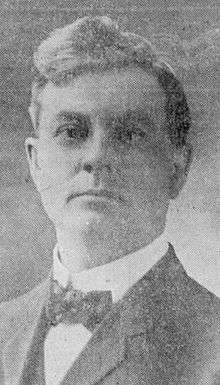 Elmer L. Fulton |
Democratic | November 16, 1907 – March 3, 1909 |
60th | Elected in 1907. Lost re-election. |
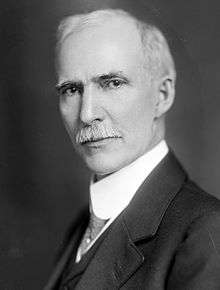 Dick T. Morgan |
Republican | March 4, 1909 – March 3, 1915 |
61st 62nd 63rd |
Elected in 1908. Re-elected in 1910. Re-elected in 1912. Redistricted to the 8th district. |
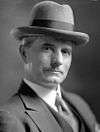 William Hastings |
Democratic | March 4, 1915 – March 3, 1921 |
64th 65th 66th |
Elected in 1914. Re-elected in 1916. Re-elected in 1918. Lost re-election. |
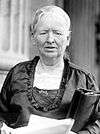 Alice Robertson |
Republican | March 4, 1921 – March 3, 1923 |
67th | Elected in 1920. Lost re-election. |
 William Hastings |
Democratic | March 4, 1923 – January 3, 1935 |
68th 69th 70th 71st 72nd 73rd |
Again elected in 1922. Re-elected in 1924. Re-elected in 1926. Re-elected in 1928. Re-elected in 1930. Re-elected in 1932. Retired. |
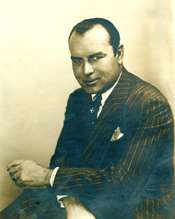 John C. Nichols |
Democratic | January 3, 1935 – July 3, 1943 |
74th 75th 76th 77th 78th |
Elected in 1934. Re-elected in 1936. Re-elected in 1938. Re-elected in 1940. Re-elected in 1942. Resigned to become vice president of Transcontinental & Western Air, Inc. |
| Vacant | July 3, 1943 – March 28, 1944 |
78th | ||
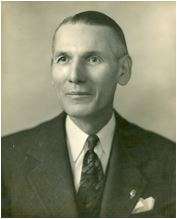 William G. Stigler |
Democratic | March 28, 1944 – August 21, 1952 |
78th 79th 80th 81st 82nd |
Elected to finish Nichols's term. Re-elected in 1944. Re-elected in 1946. Re-elected in 1948. Re-elected in 1950. Died. |
| Vacant | August 21, 1952 – January 3, 1953 |
82nd | ||
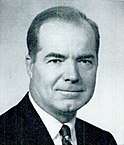 Ed Edmondson |
Democratic | January 3, 1953 – January 3, 1973 |
83rd 84th 85th 86th 87th 88th 89th 90th 91st 92nd |
Elected in 1952. Re-elected in 1954. Re-elected in 1956. Re-elected in 1958. Re-elected in 1960. Re-elected in 1962. Re-elected in 1964. Re-elected in 1966. Re-elected in 1968. Re-elected in 1970. Retired to run for U.S. Senator. |
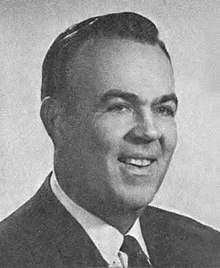 Clem McSpadden |
Democratic | January 3, 1973 – January 3, 1975 |
93rd | Elected in 1972. Retired to run for Governor of Oklahoma. |
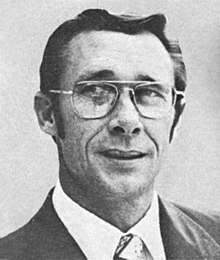 Ted Risenhoover |
Democratic | January 3, 1975 – January 3, 1979 |
94th 95th |
Elected in 1974. Re-elected in 1976. Lost renomination. |
.jpg) Mike Synar |
Democratic | January 3, 1979 – January 3, 1995 |
96th 97th 98th 99th 100th 101st 102nd 103rd |
Elected in 1978. Re-elected in 1980. Re-elected in 1982. Re-elected in 1984. Re-elected in 1986. Re-elected in 1988. Re-elected in 1990. Re-elected in 1992. Lost renomination. |
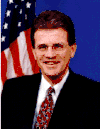 Tom Coburn |
Republican | January 3, 1995 – January 3, 2001 |
104th 105th 106th |
Elected in 1994. Re-elected in 1996. Re-elected in 1998. Retired to practice medicine. |
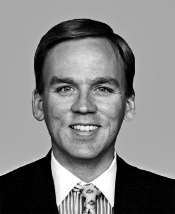 Brad Carson |
Democratic | January 3, 2001 – January 3, 2005 |
107th 108th |
Elected in 2000. Re-elected in 2002. Retired to run for U.S. Senator. |
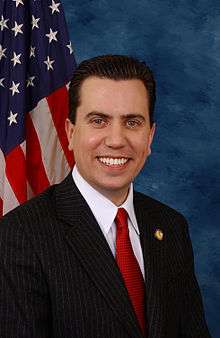 Dan Boren |
Democratic | January 3, 2005 – January 3, 2013 |
109th 110th 111th 112th |
Elected in 2004. Re-elected in 2006. Re-elected in 2008. Re-elected in 2010. Retired. |
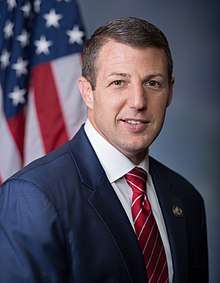 Markwayne Mullin |
Republican | January 3, 2013 – Present |
113th 114th 115th 116th |
Elected in 2012. Re-elected in 2014. Re-elected in 2016. Re-elected in 2018. |
Historical district boundaries
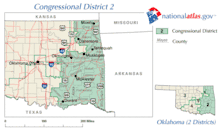
References
- Center for New Media & Promotion (CNMP), US Census Bureau. "My Congressional District". www.census.gov.
- "Partisan Voting Index – Districts of the 115th Congress" (PDF). The Cook Political Report. April 7, 2017. Retrieved April 7, 2017.
- Oklahoma's 2nd District (accessed May 24, 2010).
- Representative Dan Boren: District Demographics, That's My Congress (accessed May 11, 2010).
- "Paying Attention to the Native American Vote". www.pbs.org.
- "Cherokee Nation Honors U.S. Rep. Mullin". Times Record.
- "Oklahoma Secretary of State 2014 General Election". Oklahoma Secretary of State. November 4, 2014. Retrieved January 6, 2015.
- "Official Results - General Election — November 8, 2016". Oklahoma Secretary of State. November 8, 2016. Retrieved December 1, 2016.
- Gaddie, Ronald Keith, "Democratic Party," Encyclopedia of Oklahoma History and Culture Archived May 31, 2010, at the Wayback Machine (accessed May 24, 2010).
- Martis, Kenneth C. (1989). The Historical Atlas of Political Parties in the United States Congress. New York: Macmillan Publishing Company.
- Martis, Kenneth C. (1982). The Historical Atlas of United States Congressional Districts. New York: Macmillan Publishing Company.
- Congressional Biographical Directory of the United States 1774–present